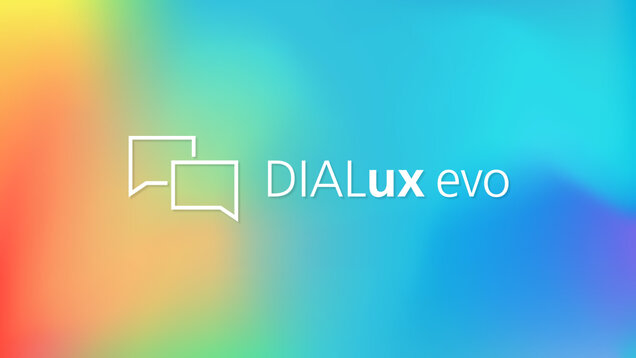What you can expect in DIALux

Recently we released the latest version of our lighting design software, DIALux evo 9. A lot has changed in this version, both obviously in the form of new, helpful features and in the infrastructure, in the background of the software.
This year, some exciting features are coming up. We interviewed Thorsten Kock, division manager software development at DIAL, and asked him what kind of innovations we can expect this year. He also explained how our software development works and how the upcoming features will be developed.

Thorsten, how are features planned and developed in DIALux?
The development roadmap of DIALux is determined by a committee consisting of the management board, our two product owners and myself. This roadmap is based on our strategy. With DIALux evo, we have taken a step in 2012 that has made completely new lighting designs possible. Lighting design was no longer limited to individual rooms or the question of whether to plan interior or exterior lighting. For the first time, lighting designers had the opportunity to implement and visualize a holistic, cross-building design. This step brought a completely different complexity to the planning, which was a problem for many professional users, as they had to create and plan projects within a short time. Our strategy since 2017 has therefore been to make work much more efficient. We held several workshops with users from different areas and incorporated the findings into the development. The final points from this area were to optimize the luminaire arrangements and documentation, which should enable lighting designers to document and, above all, present their results quickly and efficiently.
How are these features prioritized?
Both at the level of strategy and in the implementation of individual features, we try to create the greatest possible benefit as early as possible. At the implementation level, this means that our product owners, together with the development team, analyze requirements and break them down into meaningful small "packages". We work here with the user story format, which describes fairly well what a user wants to achieve with the software. By regularly reviewing the work status, we can quickly adapt the development plan. In this way we try to use the development time as efficiently and purposefully as possible.
What comes next?
We are currently working on version DIALux evo 9.1, which will be released in summer. As the name already indicates, this will be a further development of DIALux evo 9. We will also apply the new concept of line arrangement to the field, making applications such as ceiling grids much more efficient than they are now. For example, we will add a solution to the documentation that allows graphics to be quickly and easily fitted into the formats of the output layouts. The documentation has become much more visually, but when using graphics, you cannot yet exploit this advantage. Of course we would like to change that.
Will there be more Pro features?
The next Pro feature will already be available in DIALux evo 9.1. It will allow users to create planning results not only as PDF or DWG. We would like to support Word, Powerpoint and Excel formats. With this we want to meet the request of some users of special documentation types. Of course, all essential functions required for lighting design remain free of charge. These are only special extensions that are required by a certain user group.
Many users ask about emergency lighting, is there anything in the planned?
Yes, I can understand that. Up to now we have always referred to DIALux 4 in the case of emergency lighting. Our development strategy was initially aimed at making planning with DIALux evo as efficient as possible. The closer we came to this goal, the stronger the call for emergency lighting was. With DIALux evo 9.1 we will have implemented the last important points of this strategy. For emergency lighting, we have already held several workshops with lighting designers, who showed us once again the different workflows and approaches. Daniel, one of our two Product Owners, has already started the preparation together with the team. The development team is already creating the first prototypes to test the operating concepts with different users. With DIALux evo 10 we want to release a version of emergency lighting that offers much more efficient workflows compared to DIALux 4.